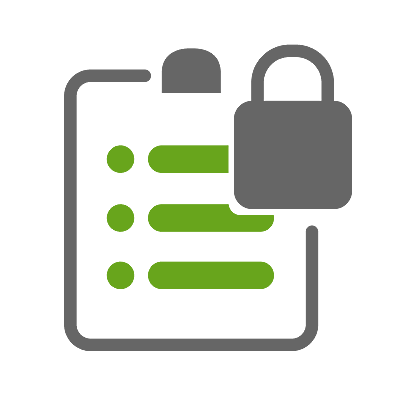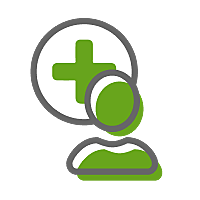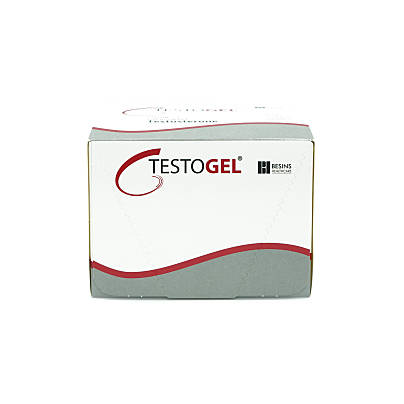Testosterone Levels
Order testosterone home testing and treatment online with free and fast delivery.
Prices from £45.00
To order a treatment, fill in a brief medical questionnaire. A doctor will review your order and prescribe treatment if it’s right for you. For test kits, you can just place an order. Once you’ve sent your sample to our UK-accredited partner laboratory, results and advice from our doctors will be ready in 2 to 3 days. How to Order
If you have a reduced sex drive or erectile dysfunction, our service allows you to get your testosterone levels checked quickly and easily. If you are between 18 and 65 years old and are already using testosterone treatment for low testosterone levels that was started by a doctor, we can prescribe your repeat treatment.
You can read more information on testosterone levels at the bottom of this page or message one of our doctors for free. Simply create an account to send a secure message.
Why choose us?
- Your order is reviewed by one of our doctors to ensure you have the right treatment
- Discreet and secure service with no need to leave your home
- Select free delivery or pick up treatment from your local Asda pharmacy
- Free aftercare with your online account


No results found.
Please check your spelling or try another treatment name.




About testosterone level testing and treatment
How to get tested for your testosterone levels
If you believe you have symptoms of low testosterone, you can have your testosterone levels checked. We offer a testing kit that you can use to check your own levels without the need to see a doctor face to face.
Using a home test is easy and simple, and works in the following steps:
- Place your order and have your kit delivered directly to your door, or collect from a local post office
- Collect a couple of drops of blood, by using the finger-prick test
- Send your samples off to the lab for testing
- Once your results are ready (normally in 2 to 3 days), one of our doctors will review your results
- One of our doctors will be in touch, via a confidential and secure message in your account to give you your results and provide advice and support on what steps to take next
-
-
Testosterone is the main sex hormone found in males. The testicles make testosterone, which controls male physical features. Women too can have testosterone. However, it’s in much smaller amounts. Testosterone levels are measured through blood tests. In general, the normal total testosterone level in males should be above 12 nmol/L. A borderline level is usually between 8 and 12 nmol/L. A low level is <8 nmol/L. Depending on the lab that performs your test, these ranges may slightly vary.
Low testosterone (male hypogonadism) is a condition that causes the testicles to not produce enough testosterone. There are primary and secondary causes of low testosterone. However, this will depend on where the problem starts from.
Primary causes of low testosterone
Primary causes of low testosterone include:
- klinefelter syndrome
- injury or damage to the testicles
- cancer treatment
- mumps orchitis (mumps infection involving the testicles)
- hemochromatosis (too much iron in the blood)
Secondary causes of low testosterone
Secondary causes of low testosterone can include:
- inflammatory disease (like tuberculosis, sarcoidosis, and histiocytosis)
- HIV/AIDS
- obesity
When testosterone levels are low and below 12 nmol/L, it can affect you both mentally and physically.
Some common signs of low testosterone include:
- erectile dysfunction (ED)
- reduced bone mass
- mood swings
- increased body fat
- poor concentration
- reduced sex drive
- problems with sleep
While it’s natural for testosterone levels to decline as you age, low testosterone can cause symptoms that can impact on your daily life. This means it’s important you find the cause for it so you can decide what needs to be done to resolve it.
-
-
Testosterone gel is a medicated gel that is absorbed through the skin and into the bloodstream. It helps the body achieve normal testosterone levels. If you are already using testosterone replacement therapy (which has been started by a doctor) and need a new prescription, we can review if it is safe to continue and provide this treatment for you. We provide two types of testosterone gel that you can use.
Before starting any testosterone treatment it’s important that you have had a full check up by a doctor, including blood tests and an examination. This is to find out the reason why your testosterone levels are low and to make sure it is safe for you to use.
Testogel® 50mg/5g Sachets
This gel should be applied daily to the skin on either your arms, shoulders, or stomach. The testosterone steadily passes from the gel, through the skin, and into the bloodstream. The recommended dose is 5g of gel, preferably in the morning. The daily dose can be adjusted by your doctor but must not exceed 10g of gel per day. Once you open a 5g sachet, the contents must be applied to the skin straight away. Allow the gel to dry for at least 3 to 5 minutes before dressing. Make sure to wash your hands with soap and water before you apply the gel.
Tostran Gel
The normal starting daily dose for this gel is 3g, which contains 60mg of testosterone. The dose can be adjusted by your doctor, with the maximum dose being 4g of gel (80mg of testosterone) per day. You should apply Tostran Gel onto dry, clean skin once per day at the same time, such as in the morning once you have showered. Tostran Gel should be rubbed either onto the abdomen, or inner thighs. Once complete, you must wash your hands well with soap and water.
With both of our gels, they must not be applied to the genitals.
-
-
Although testosterone treatment is generally considered safe, there can be some side effects. You must be aware of these, as you can spot them while you receive treatment.
Common side effects of testosterone treatment include:
- acne
- oily skin
- mood swings
- mild fluid retention
- higher risk of prostate issues
Some side effects are not visible, and you may be advised to get extra tests done to look for changes while you receive testosterone treatment.
Side effects you can test for are as follows:
- decreased sperm count (can cause infertility)
- changes in cholesterol levels
- higher red blood cell count
Although rare, there are some serious side effects of testosterone treatment.
You must get medical help right away if you have:
- signs of an allergic reaction (difficulty breathing, hives, swelling)
- nausea (feeling sick)
- swelling of the feet or ankles
- swelling or pain in legs (a sign of blood clots)
- changes in skin colour
- dark urine (pee)
- yellowing of the skin or eyes (jaundice)
-
-
You should not use Testogel or Tostran Gel if you are:
- allergic to testosterone or any of the ingredients in the medicine
- have prostate cancer
- have breast cancer
You should speak to your doctor before using testosterone treatment if you have:
- epilepsy and migraines (treatment may make these conditions worse)
- high blood pressure (testosterone may cause blood pressure to rise)
- severe heart, liver, or kidney disease (treatment may cause severe complications like water retention)
- cancer that affects the bones (treatment may increase levels of calcium in your pee or blood)
- blood clotting problems
If you are taking, have recently taken, or may take any other medicines in the future, you should speak to your doctor before taking testosterone treatment.
Some medicines may lead to your dose of this treatment being changed, such as:
- oral anticoagulants (used to thin the blood)
- corticosteroids (steroids)
- insulin (the hormone which regulates how the body uses and stores fat and glucose)
Although there are no foods that will interact with testosterone treatment, there are some foods that may lower testosterone levels in general.
These include:
- vegetable oil
- flaxseed
- soy
- mint
- processed foods
During long periods of skin contact, there is a chance testosterone can be transferred from person to person, unless you cover the treated area. Should this happen, the other person may show signs of increased testosterone, like more hair on the body and face, or a deepened voice. It can also change the menstrual cycle of women, so you must be very careful when using testosterone treatment. Washing your hands well with soap and water before and after applying treatment and washing the application area before you make close contact with another person is important.
-
-
If you have low testosterone levels, your doctor may advise you to make some lifestyle changes first before treatment.
These include:
- daily exercise
- consuming less alcohol
- following a balanced diet
If you make these changes and find they have made little to no difference, or your testosterone levels are very low, your doctor may then refer you to an endocrinologist (testosterone specialist). There are various forms of testosterone replacement therapy (TRT) that you can try besides the gel.
These include:
- tablets
- patches
- testosterone injections
- implants
If you receive testosterone treatment, you must have follow up blood tests which will check if you are responding well to treatment.

Dr Kathryn Basford is a qualified GP who works as a GP in London, as well as with ZAVA. She graduated from the University of Manchester and completed her GP training through Whipps Cross Hospital in London.
Meet our doctorsArticle created: 01 Sept 2021
Last reviewed: 01 Sept 2021
-
Low Testosterone (Hypogonadism) (April 2020) Hormone.org (Accessed 10 August 2021)
-
Male menopause (February 2019) NHS (Accessed 10 August 2021)
-
TESTOGEL 50 mg, transdermal gel in sachet – Patient Information Leaflet (PIL) (March 2021) EMC (Accessed 10 August 2021)
-
Testosterone – What It Does And Doesn’t Do (August 2019) Harvard Health (Accessed 10 August 2021)
-
Tostran 2% Gel – Patient Information Leaflet (PIL) (February 2020) EMC (Accessed 10 August 2021)


GMC: 7074021

GMC: 6149061

GMC: 7085115









